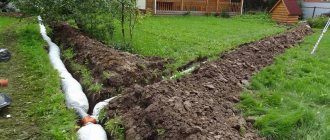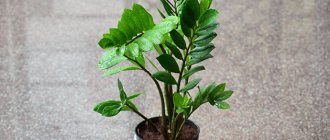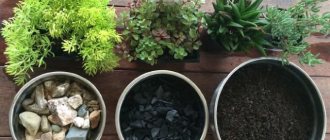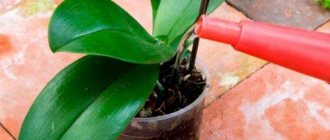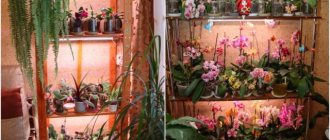What is expanded clay?
This is a natural material made from clay or shale, fired in a kiln at a temperature of 1200 °C. Contrary to popular belief, there is no division into construction and floral expanded clay - they are the same material.
On sale you can find granules of large (2–4 cm in diameter), medium (1–2 cm) and small (0.5–1 cm) fractions, as well as expanded clay sand (less than 0.5 cm). The granules, smooth on the outside, have a porous structure on the inside - they weigh little, do not interfere with air exchange and are able to accumulate and release moisture.
Peculiarities
Expanded clay is a building material with a porous structure, visually representing small granules of round or angular shape. The main method for producing expanded clay is firing clay or shale in a special furnace at temperatures above 1200°C.
In the construction industry, this material is used as a durable insulation material that is resistant to temperature changes, moisture, chemicals, and aggressive environmental factors.
In floriculture, expanded clay has become widespread due to such unique features as:
Plant growers use expanded clay as an effective drainage material. It allows you to make heavy soil more loose and airy. In addition, expanded clay, by absorbing excess moisture, prevents waterlogging of the soil in the container and, as a result, helps protect plant roots from rotting. The chemical inertness of expanded clay allows gardeners to fearlessly use all known types of organic and mineral fertilizers when caring for plants. It should be noted that the use of this material can significantly improve the access of moisture and nutrients contained in fertilizers to the root system of plants.
An important feature of expanded clay is its durability. The average service life of granules is 3-4 years, which is considered a good indicator for drainage materials used in gardening and growing indoor plants.
In plant growing, various types of expanded clay materials are used, differing in density, fraction sizes, shape, weight and even color. Expanded clay sand has the smallest fraction size. The size of its granules does not exceed 0.5 centimeters. The size of expanded clay gravel fractions can vary from 0.5 to 4 centimeters or more. In this case, gravel is considered to be expanded clay, which has round-shaped granules. Expanded clay, which has angular large granules, is called crushed stone.
Construction expanded clay has a red-brown color. In addition, decorative colored expanded clay is used in indoor floriculture and landscape design. This type of material is obtained from thermally treated clay by adding safe (non-toxic) dyes to it. It should be noted that modern technologies make it possible to obtain beautiful decorative expanded clay of almost any color.
Application of expanded clay
Bottom drainage
The material will protect the roots from stagnation of moisture, absorb excess and slowly release it into the external environment. This has a particularly positive effect on the condition of moisture-loving plants that require frequent watering: the soil will not become sour, and in the intervals between the supply of moisture (without extreme intervals) the flower will not suffer from drought.
The recommended thickness of the lower expanded clay drainage is from 2 cm, depending on the depth of the pot.
Upper drainage
By accumulating water, the granules prevent its rapid evaporation from the surface of the substrate. If there is no one to entrust with watering the flowers during a short-term vacation, the upper drainage made of expanded clay will help the moisture stay in the ground longer. However, with regular heavy watering, it is better to abandon this idea - the soil may turn sour.
Salts contained in tap water often settle on the surface of the substrate - alkalization of the soil occurs. For this reason, it is recommended to periodically change the top layer of soil for indoor plants. However, when using expanded clay, salts accumulate on the shell of the granules - it is easier to replace them.
Another advantage is protection against overheating in hot weather. Breathable expanded clay heats up in the sun more slowly than the ground.
The recommended thickness of the upper drainage made of expanded clay is at least 1 cm.
As part of the earth mixture
Fine-fraction expanded clay is often used as a loosening agent for heavy soils. It promotes better air exchange and increases the hygroscopicity of the substrate, protecting the roots from rotting in case of excessive watering. Manufacturers often include expanded clay in the substrate for cacti and other succulents. Collectors have not made such a decision, but it has its own logic: expanded clay is covered with a hard ceramic shell - it will easily absorb a small excess of moisture, but will release it less actively.
Hydroponics
When growing without a substrate, the main task is to provide the optimal amount of nutrients to the root system. Expanded clay is used as a medium that conducts water and fertilizers dissolved in it to the roots. It does not rot, does not mold, and performs well in intermittent flooding systems, in systems with frequent watering cycles, and even with the pump constantly on. Properly prepared expanded clay is chemically neutral to the ions of the nutrient solution and is suitable for reuse.
Gardening
Granules and expanded clay sand are used as mulch to protect the soil from mold in wet weather and retain moisture in hot weather.
Landscape design
Colored expanded clay decorates paths and flower beds. The dyes used in production are safe for plants and do not affect the quality of the soil.
Air humidification
In winter, many indoor plants suffer from dry air. If you don't have a humidifier, you can improve the situation with expanded clay. Soak the granules for several hours, fill wide flat containers with them, pour water into them and place them on the windowsills. Pots with plants can be placed directly on the expanded clay layer.
Drainage and its purpose
Many houseplants need soil that is about 50% solids, 35% water and 15% air. Only a properly laid drainage layer will help create optimal conditions for growth and flowering.
The problem with lack of drainage is that overwatering displaces the air that flowers need. Lack of oxygen in the soil provokes the growth of pathogenic bacteria. The root system begins to rot and the plant withers. The drainage layer ensures removal of excess moisture and good breathability.
Houseplants and pot drainage
How to replace expanded clay?
For drainage, you can take stones (pebbles, crushed stone, gravel), coconut fiber and polystyrene foam. They do not accumulate moisture, but also do not affect the pH of the soil. Crushed brick and clay shards, like expanded clay, have an alkaline reaction, which should be taken into account when preparing a soil mixture for the needs of a particular plant. Pine bark is sometimes used, but it is less durable. If the goal is to prevent rapid evaporation of moisture, sphagnum moss can be used as top drainage.
Coarse sand, coconut fiber or foam chips are suitable as a substrate loosening agent If you need a material with moisture-storing capacity, pay attention to perlite and vermiculite - they have greater moisture capacity than expanded clay and have a pH value close to neutral.
Source
How to make a drainage layer correctly?
It is better to either completely renew the drainage when replanting plants, or thoroughly rinse it of soil particles when reusing it. The thickness of the drainage layer depends on the type of indoor plant, the height of the pot, and the number and diameter of holes in the bottom of the container.
How to determine how thick the layer should be:
- with a small number of holes in the bottom of the flower pot, a high layer of drainage material is required - up to 1/4 of the height of the pot;
- if the number of drainage holes is larger, it is necessary to make a middle layer of drainage material - 1/5 of the height of the flower pot;
- for pots with a large number of large-diameter holes, a low drainage layer is suitable - 1/6 of the height of the planting container.
Drainage with high thermal conductivity (crushed stone, pebbles, river stones) must be covered with a layer of porous materials - expanded clay, vermiculite or perlite. The size of the drainage material should be smaller in diameter than the holes in the bottom of the flower pot and cover the bottom evenly.
Application of expanded clay in floriculture
Expanded clay is recommended to be used not only as drainage, but is also recommended to be added to the soil as a leavening agent. The opinions of flower growers on the advisability of using expanded clay are divided.
Some are convinced that this is an essential component of the soil and cannot be done without it, others consider it toxic, and due to its structure, it also absorbs huge amounts of water, which forms a swamp at the bottom of the pot in which pathogenic microflora begins to develop.
What is it really? Let's try to figure it out.
Expanded clay as drainage
First, let's define what drainage is? This is the presence of drainage holes in the bottom of the pot, baking powder in the soil and only after this a layer of expanded clay at the bottom. When using expanded clay, it is assumed that it will help remove excess moisture during watering. Undoubtedly, if the two previous conditions are met.
Let's consider the option when there are not enough drainage holes in the pot, or they are too small in diameter. In addition, when planting, a dense, heavy substrate is used, which clogs the holes in the pot. Over time, this substrate will settle, become compacted, and make it even more difficult for air to reach the roots. In this case, a layer of expanded clay at the bottom will help save the situation, but only partly. It will prevent the soil from clogging the drainage holes and give at least a minimal chance for air to get through to the roots.
It’s a stretch, but we can say that a layer of expanded clay at the bottom of the pot improves aeration.
As for moisture absorption and the ability to quickly absorb, retain and release moisture, one can doubt it. After all, as we remember from the experiment, expanded clay does not absorb as much moisture as we would like, moreover, during the experiment it took a certain time to absorb moisture, but when watering this time will not be available. The water will quickly pass through the substrate, some will be absorbed by the soil, and the rest will flow into the pan; only a small part of it will reach the expanded clay. An exception is that if you do not drain the water from the pan after watering, then the bottom layer will remain wet, which will create ideal conditions for the development of pathogenic microflora.
I would like to note that it is the padding polyester that some gardeners use to lay the bottom of the pot that can absorb a large amount of moisture; it is this that creates a swamp, making it difficult for air to reach the roots of the plant.
Expanded clay on the ground surface
The presence of expanded clay on the soil surface harms the plant:
Expanded clay in soil 2 compositions
There is no need for the presence of expanded clay in soil composition 2:
Source
Mistakes when making your own
Florists make the following mistakes when making drainage:
- Using sand, which compacts and does not allow moisture to pass through.
- The fraction of drainage material is over 3 cm, which does not retain moisture.
- The use of organic materials that rot over time.
- Use of chemically unstable materials.
- Laying drainage with sharp edges that damage the roots of indoor plants.
The healthy appearance of the plant, growth and development depend on the condition of the soil and drainage layer. Properly laid drainage will provide the required humidity for a particular type of indoor plant.
How is expanded clay used for plants?
Expanded clay is pellets. They can be round or cylindrical. The material is obtained by processing clay at a high temperature of 1200 0C. Depending on the size and shape of the pellets, expanded clay gravel, crushed stone and sand are distinguished. The main area of application is construction.
The material is used for the production of slabs and porcelain stoneware. It is used as a filler to insulate foundations and floor coverings. Expanded clay is actively used for growing plants. What characteristics attracted plant growers? How to work with this material?
Why are drainage holes needed in a flower pot?
In addition to proper drainage, it is important to find a good pot for planting. When purchasing a container, pay attention to whether it has drainage holes, what size they are and how they are located. If the holes are too small, the moisture will drain slowly, if they are large, the moisture will drain quickly. If there are no holes at all, they can be made at home using a drill with a suitable drill diameter.
To ensure the correct soil moisture for certain indoor plants, you should choose a container with the correct holes:
Main characteristics
Expanded clay pellets are porous. They have a lot of air. The material is introduced to maintain the soil in a soft state. Both gravel and crushed stone are used. Expanded clay supports normal gas exchange processes for plants.
It is used both in garden beds and for preparing soil mixtures for seedlings and for growing indoor flowers.
The pores of crushed stone can fill with water. The material is hygroscopic. Water is retained in the pores for a long time. Expanded clay releases moisture to plants gradually, maintaining a constant water balance in the soil. This is especially important for moisture-loving flowers and garden crops.
Areas of use
Expanded clay is purchased at retail outlets where garden products are sold. It is in packages. They are usually labeled as "plant drainage" or floral drainage. Usually this is prepared crushed stone or gravel. It has already been washed and normalized for acidity.
It can be immediately used for indoor plants, hydroponics or in the garden plot. The manufacturer usually reports the pH of the material. The following companies represent expanded clay on the market:
The manufacturer sells drainage and pellets of a certain size. Plant growers do not need to select expanded clay and sort it by diameter. The material can also be purchased at a hardware store. At the same time, they pay attention to factions.
Material with grains up to 3-5 mm is sand. It is used in construction, as fillers for warm mortars. In plant growing, it is introduced to improve the soil. You can sow in sand, but this is rarely done. Sand is difficult to normalize for acidity. It must be soaked in water and reagents introduced. Then, it is sifted, but the granules are too small. For sowing it is better to use vermiculite or perlite.
Expanded clay gravel is round granules of a terracotta shade. Its scope of use is more extensive.
Pellets of 5-10 mm are used both in construction and in crop production. Expanded clay is used for aquariums. The material is laid as drainage for alpine slides during the construction of garden paths. It is introduced into the soil to maintain softness. Gravel is used as a decorative material.
Expanded clay 10-20 mm is actively used by home plant growers and gardeners. It can be introduced into the soil so that it retains moisture well and is loose. It is used to prepare drainage for indoor plants when growing vegetables on the balcony.
In medium-fraction gravel, seedlings are rooted and flowers are grown. This is a good substrate for hydroponic plants. The material is light. It does not weigh down the structure. The pellets are placed in flower pots, in the garden under trees and shrubs for mulching.
Material with granules of 20-40 mm is used mainly in construction for insulating roofs, floors, and foundations.
Gardeners consider it for drainage of trees and large shrubs. The pellets are large, they are inconvenient to place in a flower pot and introduce into the soil mixture, but they can be laid on top of the soil to maintain moisture in it. They look beautiful in a pot or in the garden.
For indoor plants
Home growers use expanded clay of fine or medium fraction. Rooting of cuttings is carried out on it. Orchids, palm plants, roses, and moisture-loving flowers develop well on the substrate. The substrate must be prepared.
- It is washed and kept in water for 3 days. Then change the water and check the pH. If the indicator is increased, then soda or special products such as “PH DOWN” are added to the solution. Optimal pH 5.8-6.0 units.
- Take a small container and fill it with prepared expanded clay.
- They make a niche in it and install the cutting. Sprinkle and lightly compact the substrate.
- The cutting is covered with a dome to create a high humidity regime for it. The dome is opened daily for ventilation.
Recommended: What is GrowPlant substrate?
To grow roots, you don’t need a lot of expanded clay, so you shouldn’t take large containers so as not to over-moisten the plant. Watering is rare, bottom. With overhead watering, the pellets can rise, disrupting the development of plants.
- Before planting seedlings in a flower pot, drainage is placed at the bottom. It can be mixed with vermiculite, perlite or sand to increase drainage.
- The pot is filled with soil mixture. It is prepared from organic fertilizers. Fine expanded clay, prepared according to all the rules, is added to the mixture. For 1 liter of mixture, ½ tbsp is required. gravel.
- After planting, mulch is laid. You can use coarse granules; they look prettier.
Many plant growers are discussing the question of what can replace expanded clay. Gravel is often mixed with vermiculite or perlite. These are also substrates of natural origin. Expanded or agroperlite and vermiculite are used in plant growing. They have similar characteristics.
Expanded clay is a derivative of clay. This is an environmentally friendly material that has unique characteristics. In plant growing, it is used for soil improvement, for drainage, mulch, and rooting of seedlings. When growing garden crops and flowers in hydroponics, gravel is considered as an independent substrate.
How to use in the garden?
To improve the soil, expanded clay is usually scattered around the site. The optimal volume is 5 l/m2. The bed is immediately dug up to mix the gravel with the soil. There is no need to rinse or sift it. Choose gravel with a size of 10-20 mm.
To plant seedlings, holes are made in the garden bed. So that they constantly receive nutrition along with moisture, to maintain a constant temperature, expanded clay is placed on the bottom.
| № | Helpful information |
| 1 | For vegetables, melons, and strawberries, drainage is made with a layer thickness of 5 cm. The pellets are mixed with soil, fertilizers and ash; carry out planting of seedlings |
| 2 | Expanded clay trees will require more, about 20 cm. It is recommended to mix it with sand |
| 3 | Drainage is also used when planting berry bushes. A layer 10 cm thick will be required |
To prevent soil waterlogging and overheating, prepare mulch. It is scattered in an even layer under the seedlings. With a mulch depth of 5 cm, the development of weeds can be avoided. Insects do not settle on gravel. This is good protection against pests and pathological microflora.
You can root seedlings and indoor plants in expanded clay. The material is environmentally friendly, but for watering it is recommended to use a nutrient solution with fertilizers. The chemical composition of expanded clay gravel is represented by oxides of silicon, aluminum, iron, calcium, potassium, and magnesium. They are washed out of the granules, but slowly.
Experienced plant growers claim that the roots of seedlings of tomatoes, cucumbers, peppers, and eggplants develop better on expanded clay. Seedlings never suffer from blackleg; they do not often need to be watered. The roots grow freely. For seedlings, it is recommended to use hydroponics, bottom watering or introducing a solution around the perimeter of the container.
How to properly install drainage?
First, let's find out why drainage is needed. It helps excess moisture leave the soil so that it does not become acidic and the roots do not rot, that is, it serves as a natural drainage system.
To choose the right drainage, you should take into account the type of plant, size and material of the container . Before laying, you should choose the right drainage composition and find out how thick the layer should be.
Layer height
When calculating the height of the drainage layer, we focus on the shape and size of the pot:
The given values are used to fill medium-sized containers. If the parameters of the pot are significantly higher or lower than average, the drainage height should be:
Why do you need expanded clay for flowers?
Imagine: summer, sea, rocky beach. All you need for happiness is the warm sun and the sound of the waves. Expanded clay is also pleasant and convenient for plants. Even its appearance and function are somewhat reminiscent of pebbles on the beach. Let's try to figure out whether expanded clay is needed in a pot and why.
Expanded clay: what is it?
Expanded clay is small hard lumps of clay. Before getting the finished stones, the clay goes through an oven and a temperature of 1200°C. It is in the oven that the beneficial properties of the material arise.
However, it also has disadvantages. The main one is more understandable to chemists: expanded clay is capable of changing the acid-base balance of the soil. In simple words, the living conditions of the green friend will become a little harsher, and you will have to fight for his health. Of course, this does not threaten houseplants as much, so there is no need to panic. In addition, the life of expanded clay is short: only 3-4 years. After this it is worth replacing it.
Expanded clay for flowers: application
For flowers, this is a wonderful friend and helper. It is used for several purposes.
1. Bottom drainage is the best protection against root rotting. If you suddenly overfill the water, the expanded clay will take in all the excess and will gradually release it to the plant. Even his lunch is on schedule!
2. Top drainage – for those who like to combine business with pleasure. They went on vacation themselves, but left their favorite flower at home, with no one to water it. Expanded clay in a flower pot will retain moisture and prevent it from evaporating. In addition, it will protect outdoor plants from overheating. Such a “panama hat” from the sun.
3. Mixed with soil. Expanded clay here is better to use fine fraction. Thanks to it, air easily passes through the ground, reaching the very roots. Let's remember another plus - moisture retention. Experienced gardeners recommend planting succulents and cacti in this kind of soil.
4. Instead of soil, the plant lives directly in expanded clay. Expanded clay easily “conducts” fertilizers and water through itself, retains excess and feeds its green roommate with it.
5. Expanded clay + flower bed = beautiful and healthy plants. It will show its best side in any weather. Stops mold if it's damp, shares water if it's dry.
Source
Forum of flower growers Frau Flora
About growing indoor and garden plants; discussion of species, varieties, diseases, pests.
Moderator: Floriana
Post by Yuryevna » Jan 30, 2022, 12:14 pm
Pelargonium 'Santa Maria Centennial' now looks like this after pruning on December 3, 2017. From mid-January it winters in the north-west. windowsill.
Expanded clay
Post by Florian » Jan 30, 2022, 12:34 pm
Expanded clay
Post by Yuryevna » Jan 31, 2022, 01:14 pm
Expanded clay
Post by Florian » 31 Jan 2022, 14:29
Expanded clay
Post by Lyaksandrovna » 06 Feb 2022, 23:48
Expanded clay
Post by Valery » 07 Feb 2022, 15:03
Expanded clay
Post by Lyaksandrovna » 07 Feb 2022, 23:14
Expanded clay
Post by Florian » 08 Feb 2022, 11:15
Expanded clay
Post by Lyaksandrovna » 08 Feb 2022, 22:31
Expanded clay
Post by Florian » 08 Feb 2022, 23:07
